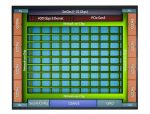Last month, I blogged about a webinar on embedded systems development presented by Agnisys CEO and founder Anupam Bakshi. I liked the way that he linked their various tools into a common flow that spans hardware, software, design, verification, validation, and documentation. Initially I was rather focused on the design aspects… Read More
Tag: soc
Digital Design Technology Symposium!
Synopsys virtual events are high on my list for three reasons:
- They are very well organized and professionally
WEBINAR: Design Adaptive eFPGA IP
Since the start of PROMS, PLDs and FPGAs we have learned the importance of programmability in modern semiconductor design. Today we have eFPGAs for “design adaptive” embedded programmability and that is what this webinar is all about.
Several key points are discussed starting with the Law of Accelerating Returns as it applies… Read More
Can you really meet your SoC design schedule without a good GUI?
Talk to the members of a digital design team and you will always find two types of users. One who likes using the GUI while working on his design and the other who is passionate about using scripts and the command line options. This is akin to the two camps of users who either love either good old Vi/Vim or the ever versatile Emacs editor.… Read More
Who is Driving This Car Anyway?
My Lyft driver in San Jose thought his Hyundai had “autopilot,” alluding I suspected, to Tesla Motors’ feature of the same name which has placed that company at the forefront of driving automation development and the focal point of fatal crash investigations. Before either of us got hurt I gently disabused my driver of his dangerous… Read More
Free webinar – Accelerating data processing with FPGA fabrics and NoCs
FPGAs have always been a great way to add performance to a system. They are capable of parallel processing and have the added bonus of reprogramability. Achronix has helped boost their utility by offering on-chip embedded FPGA fabric for integration into SoCs. This has had the effect of boosting data rates through these systems… Read More
WEBINAR: Generating and Measuring IP Security Threat Levels For Your SoCs
IPs have an attack surface that indicates how they can be compromised in real world scenarios. Some portions of the attack surfaces are well known, others are discovered during analysis, testing or out in the field. SoCs that use large collections of IPs need a systematic and reliable way to determine the various security vulnerabilities… Read More
Webinar – AI/ML SoC Memory and Interconnect IP Perspectives
For decades development work on Artificial Intelligence (AI) and Machine Learning (ML) was done on traditional CPUs and memory configurations. Now that we are in the “hockey stick” upturn in deployment of AI and ML, the search is on for the most efficient types of processing architectures. The result is a wave of development for… Read More
IP Lifecycle Management and Permissions
My first professional experience with computers and file permissions was at Intel in the late 1970s, where we used big iron IBM mainframes located far away in another state, and each user could edit their own files along with browse shared files from co-workers in the same department. I saw this same file permission concept when … Read More
Are the 100 Most Promising AI Start-ups Prototyping?
I came across a report on the 100 most promising AI start-ups. The report claimed that CBInsights had “selected the 100 most promising AI start-ups from a pool of 3K+ companies based on several factors …” Wait, what … 3K+ companies!?!? This was a stunning reminder of the sheer magnitude of what is shaping up to be a veritable tsunami… Read More










